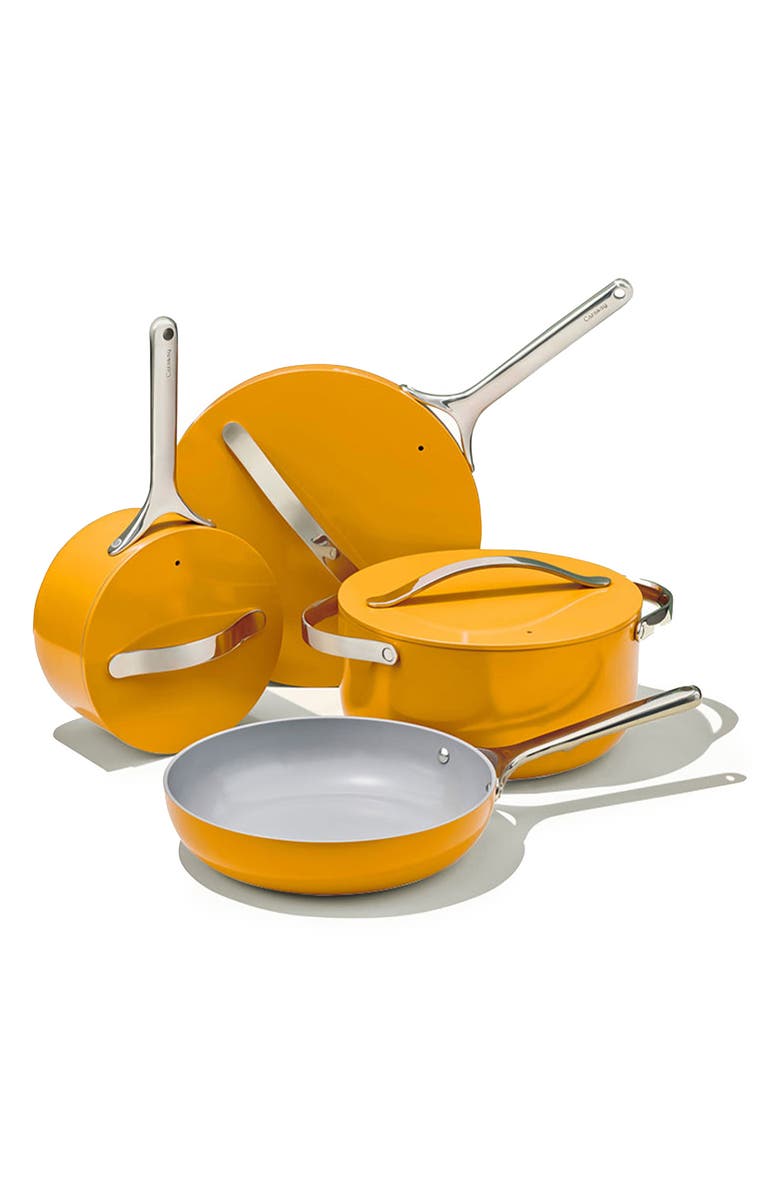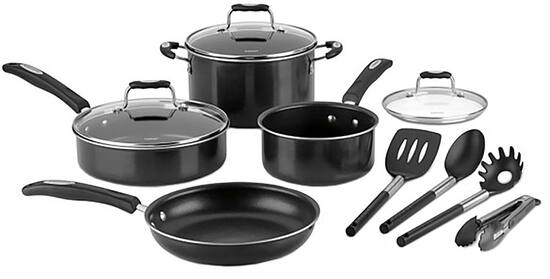Non-Toxic Ceramic Non-Stick 7-Piece Cookware Set with Lid Storage CARAWAY
Enjoy the nonstick chemical-free perfection of this good-looking cookware set complete with pot and lid holders.
Enjoy the nonstick chemical-free perfection of this good-looking cookware set complete with pot and lid holders.
What it does: Each piece features a nontoxic, nonstick ceramic coating that resists damage and won’t ever release harmful fumes or chemicals—even if you accidentally overheat or thermal shock your cookware. Stainless steel handles offer sleek functionality.
Compatible heat sources: Oven-safe.
Includes: 3-quart saucepan with lid, 4.5-quart sauté pan with lid, 10.5-inch fry pan, 6.5-quart Dutch oven with lid, pot and lid storage.
- Aluminum/stainless steel
- Imported
- Item #6791026






by Gary
quality and color were very good.
by Sherry
Love the pans, but the big pot holder was broken, how can I order a new one?
by Benjamin
cooks better then they look!
by Patty
I cook every night, this is the best cookware I have ever owned. It changes have everything taste fir the better. Love love love
by Vicki
The quality is unbelievable, we are very happy and have recommended cookware to our families.